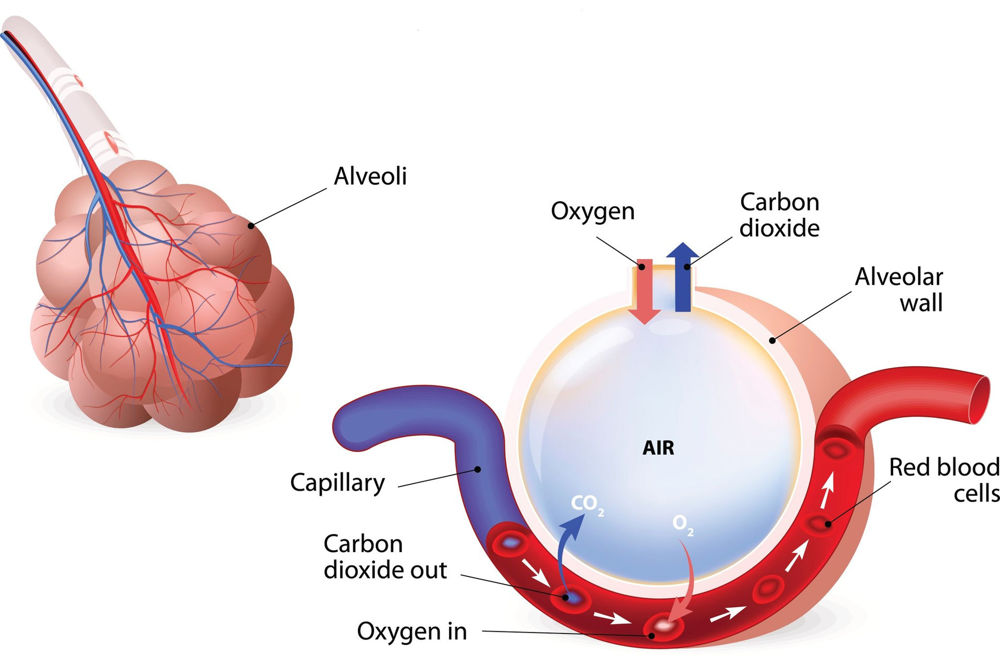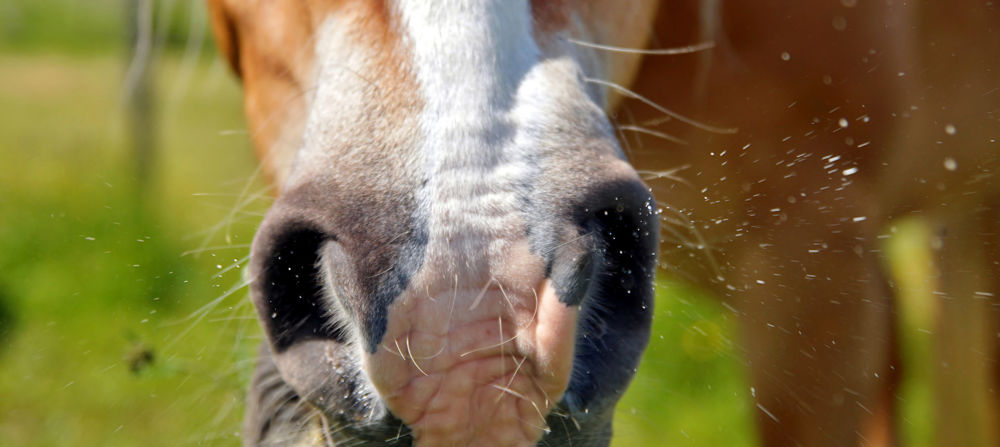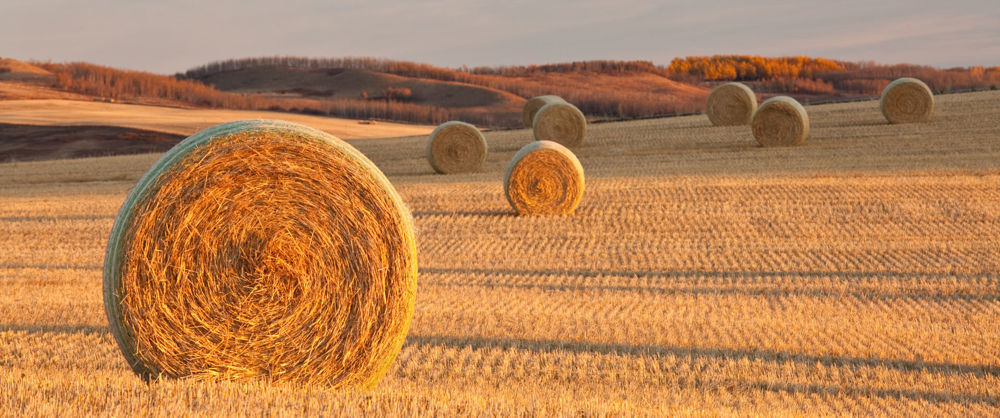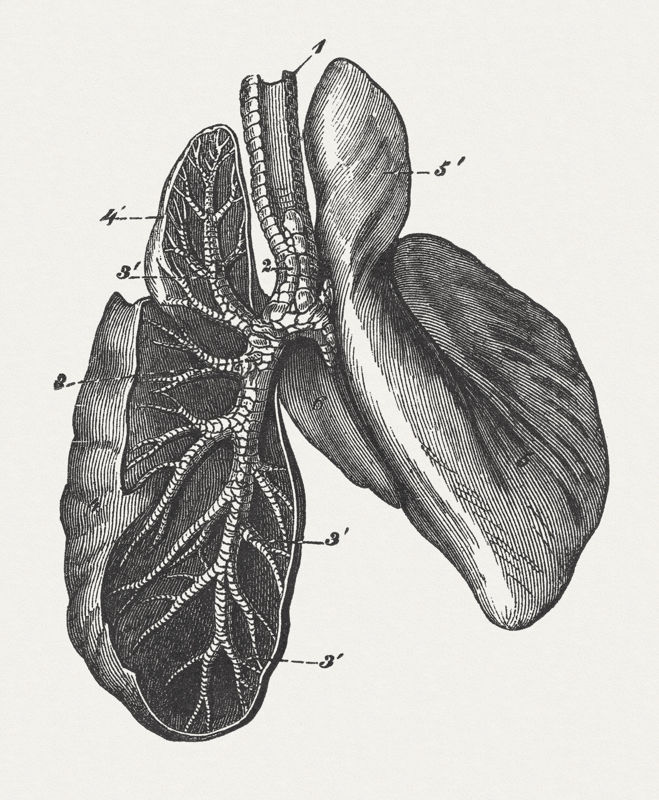Anouk Frieling, MSc Equine Sciences, BSc (Hons)
Horses are hindgut fermenters, therefore high-fibre forage forms the basis of their diet. The most commonly forage fed to horses is field dried hay
Importance of the Respiratory System
The respiratory system of the horse consists of the nose, mouth, pharynx (throat), larynx, trachea (windpipe), bronchi, bronchioles, alveoli and the lungs .
Besides providing oxygen and removing carbon dioxide from the blood stream, the respiratory system also has an important role in immune responses in the body . A healthy functioning respiratory tract is important for the delivery of oxygen, which is used for energy metabolism, and removal of carbon dioxide but also plays a important role in the innate immune response of the horse. Therefore, if respiratory health decreases due to foreign particles that irritate the respiratory system, it can have an effect on overall health and performance of the horse, making it important to maintain respiratory health through optimal management.

Figure 1: The respiratory system of the horse has an important function in exchange of gasses an is a part of the innate immune system. In the alveoli the exchange of gasses takes place, delivering oxygen and removing carbon dioxide from the blood.
The effect of Forage on Respiratory Health
When respirable dust or mycotoxins enter the respiratory tract, most particles deposit on the epithelium, from which they are cleared meaning they are unable to cause harm .

Figure 2: Dust can irritate the respiratory tract causing the horse to sneeze or cough occasionally. Once the horse is exposed to dust for a prolonged period the horse can develop a chronic respiratory disease.
Inflammatory airway disease is one of the most common respiratory diseases in athletic horses caused by respirable dust .
Recurrent airway obstruction, previously known as chronic obstructive pulmonary disease (COPD), is a respiratory disease caused by respirable dust in the environment of the horse, but due to management changes, such as providing a dust free environment, the disease can be managed .
Figure 3. There are other forage options instead of hay which have a lower dust content. Horses are often fed haylage or silage.
Forage for Respiratory Health
The digestive tract of the horse is adapted to ferment high-fibre feedstuff into volatile fatty acids (VFA), which can be used as an energy source for various processes in the body .
Haylage is made from grass that is cut earlier than grass used for hay production .
Another forage option, which is being fed more often nowadays to reduce exposure to environmental irritants, is silage suggested that silage aids the maintenance of a stable respiratory system in horses diagnosed with COPD, also known as equine asthma. Thus, indicating that silage is a suitable forage to feed to support respiratory health.
Even though silage is a suitable forage to increase and maintain respiratory health there are a few considerations that should be taken into account before switching to silage. Silage is higher in energy therefore feeding a smaller portion, compared to hay, will meet the energy requirements of the horse .

Figure 3: There are other forage options instead of hay which have a lower dust content. Horses are often fed haylage or silage.
Management of Respiratory Health and Prevention
Horses with severe respiratory diseases require long-term management .
Respiratory diseases can be avoided by ensuring the environment contains a low dust percentage. This can be achieved by ensuring that forage that is fed contains a low dust content, by using low-dust bedding materials and providing ventilation in the stables, and by allowing as much time out of the stables as possible. As mentioned earlier, there are also other forage options which contain less dust and will therefore support a healthy respiratory system.
Soaking hay is a commonly used method to lower the dust content in hay. It is suggested that soaking hay for 5 to 10 minutes decreases respirable dust in hay but maintains hay quality .
Another more recently developed method is steaming hay to lower the dust content using a commercial steamer. Steaming hay is a method which results in decreased airborne respirable particles whilst maintaining mineral and protein content and therefore not decreasing forage quality . In conclusion, hay-steaming provides a long-term solution to increase hygienic quality of hay and prevent or manage respiratory diseases in horses.
Conclusion
The respiratory system of the horse has an important function in gas exchanges and overall health and performance. Therefore, if the respiratory tract is irritated or compromised this influences the health of the horse and the performance. Respirable dust in the horse’s environment originating from forage can cause an inflammatory response in the respiratory tract. If the respiratory system is irritated for a prolonged period, horses can develop a chronic respiratory disease such as equine asthma, also known as inflammatory airway disease, or recurrent airway obstruction. Clinical signs of respiratory diseases are increased production of mucous, developing a recurrent cough and poor performance. As respirable dust often originates from hay, it is an option to provide different types of forages such as haylage and silage which usually contain a lower dust content but still provide the required nutrients. Horses that develop airway disease require suitable long-term management through for example, medication and removing the horse from the dusty environment. Over recent years, steaming has been adopted as a suitable method to reduce the dust content in hay whilst maintaining nutrient quality. In contrast, soaking hay has been shown to reduce nutrient content and hygienic quality of the forage.
References
Auger, E. J., & Moore-Colyer, M. J. S. (2017). The Effect of Management Regime on Airborne Respirable Dust Concentrations in Two Different Types of Horse Stable Design. Journal of Equine Veterinary Science, 51: 105-109.
Besier, J., Strickler, B., von Niederhäusern, R., & Wyss, U. (2013). Heu oder haylage in der pferdefütterung im vergleich. Agrarforschung Schweiz, 4(6): 264-271.
Brazil, T. J., Dagleish, M. P., McGorum, B. C., Dixon, P. M., Haslett, C., & Chilvers, E. R. (2005). Kinetics of pulmonary neutrophil recruitment and clearance in a natural and spontaneously resolving model of airway inflammation. Clinical and Experimental Allergy, 35(7): 854-865.
Cha, M. L., & Costa, L. R. R. (2017). Inhalation Therapy in Horses. Veterinary Clinics of North America - Equine Practice, 33(1): 29-46.
Clarke, A. F., & Madelin, T. (1987). Technique for assessing respiratory health hazards from hay and other source materials. Equine Veterinary Journal, 19(5): 442-447.
Clements, J. M., & Pirie, R. S. (2007). Respirable dust concentrations in equine stables. Part 1: Validation of equipment and effect of various management systems. Research in Veterinary Science, 83(2): 256-262.
Davis, E., & Rush, B. R. (2002). Equine recurrent airway obstruction: pathogenesis, diagnosis, and patient management. Veterinary Clinics of North America - Equine Practice, 18(3): 453-467.
Earing, J. E., Hathaway, M. R., Sheaffer, C. C., Hetchler, B. P., Jacobson, L. D., Paulson, J. C., & Martinson, K. L. (2013). Effect of hay steaming on forage nutritive values and dry matter intake by horses. Journal of Animal Science, 91(12): 5813-5820.
Fernandes, K. A., Kittelmann, S., Rogers, C. W., Gee, E. K., Bolwell, C. F., Bermingham, E. N., & Thomas, D. G. (2014). Faecal microbiota of forage-fed horses in new zealand and the population dynamics of microbial communities following dietary change. PLoS ONE, 9(11): 1-15.
Franklin, S. H., van Erck-Westergren, E., & Bayly, W. M. (2012). Respiratory responses to exercise in the horse. Equine Veterinary Journal, 44(6): 726-732.
Ganesan, S., Comstock, A. T., & Sajjan, U. S. (2013). Barrier function of airway tract epithelium. Tissue Barriers, 1(4): 1-9.
Gehlen, H., Oey, L., Rohn, K., Bilzer, T., & Stadler, P. (2008). Pulmonary dysfunction and skeletal muscle changes in horses with RAO. Journal of Veterinary Internal Medicine, 22(4): 1014-1021.
Gilkerson, J. R., Bailey, K. E., Diaz-Méndez, A., & Hartley, C. A. (2015). Update on viral diseases of the equine respiratory tract. Veterinary Clinics of North America - Equine Practice, 31(1): 91-104.
Grzela, K., Zagorska, W., & Grzela, T. (2012). Mechanisms of the innate immunity in the respiratory system. Central-European Journal of Immunology, 37(3): 280-285.
Humer, E., Hollmann, M., Stögmüller, G., & Zebeli, Q. (2019). Steaming Conditions Enhance Hygienic Quality of the Compromised Equine Hay With Minimal Losses of Nonfiber Carbohydrates. Journal of Equine Veterinary Science, 74: 28-35.
Intemann, S., Reckels, B., Schubert, D., Wolf, P., Kamphues, J., & Visscher, C. (2022). The Hygienic Status of Different Forage Types for Horses—A Retrospective Study on Influencing Factors and Associations with Anamnestic Reports. Veterinary Sciences, 9(5): 1-18.
Ivester, K. M., Couëtil, L. L., & Zimmerman, N. J. (2014). Investigating the Link between Particulate Exposure and Airway Inflammation in the Horse. Journal of Veterinary Internal Medicine, 28(6): 1653-1665.
Johnston, S. L., Goldblatt, D. L., Evans, S. E., Tuvim, M. J., & Dickey, B. F. (2021). Airway Epithelial Innate Immunity. Frontiers in Physiology, 12: 1-9.
Leclere, M., Lavoie-Lamoureux, A., & Lavoie, J. P. (2011). Heaves, an asthma-like disease of horses. Respirology, 16(7): 1027-1046.
Léguillette, R. (2003). Recurrent airway obstruction - Heaves. Veterinary Clinics of North America - Equine Practice, 19(1): 63-86.
Lekeux, P., Art, T., & Hodgson, D. R. (2014). The respiratory system: Anatomy, physiology, and adaptations to exercise and training. In: Hodsen, D. R. & Rose, R.J. (Eds.) The Athletic Horse: Principles and Practice of Equine Sports Medicine: Second Edition. WB Saunders: Philadelphia, USA.
Martin, T. R., & Frevert, C. W. (2005). Innate immunity in the lungs. Proceedings of the American Thoracic Society, 2(5): 403-411.
Mazan, M. (2022). Equine exercise physiology—challenges to the respiratory system. Animal Frontiers, 12(3): 15-24.
McGorum, B. (2002). Environmental Control of Respiratory Disease Do mycotoxigenic fungi cause equine grass sickness. Equine Respiratory Diseases, 1-11.
McGorum, B. C., Ellison, J., & Cullen, R. T. (1998). Total and respirable airborne dust endotoxin concentrations in three equine management systems. Equine Veterinary Journal, 30(5):
McNamara, K., O’Kiely, P., Whelan, J., Forristal, P. D., & Lenehan, J. J. (2002). Simulated bird damage to the plastic stretch-film surrounding baled silage and its effects on conservation characteristics. Irish Journal of Agricultural and Food Research, 41(1): 29-41.
Moore-Colyer, M. J. S. (1996). Effects of soaking hay fodder for horses on dust and mineral content. Animal Science, 63(2):
Moore-Colyer, M. J. S., Taylor, J. L. E., & James, R. (2016). The Effect of Steaming and Soaking on the Respirable Particle, Bacteria, Mould, and Nutrient Content in Hay for Horses. Journal of Equine Veterinary Science, 39():
Müller, C. E. (2018). Silage and haylage for horses. Grass and Forage Science, 73(4): 815-827.
Müller, C. E., Pauly, T. M., & Udén, P. (2007). Storage of small bale silage and haylage - Influence of storage period on fermentation variables and microbial composition. Grass and Forage Science, 62(3): 274-283.
Niedzwiedz, A., Jaworski, Z., Tykalowski, B., & Smialek, M. (2014). Neutrophil and macrophage apoptosis in bronchoalveolar lavage fluid from healthy horses and horses with recurrent airway obstruction (RAO). BMC Veterinary Research, 10(29): 1-7.
Olave, C. J., Ivester, K. M., Couetil, L. L., Kritchevsky, J. E., Tinkler, S. H., & Mukhopadhyay, A. (2021). Dust exposure and pulmonary inflammation in Standardbred racehorses fed dry hay or haylage: A pilot study. Veterinary Journal, 271: 1-6.
Parker, D., & Prince, A. (2011). Innate immunity in the respiratory epithelium. American Journal of Respiratory Cell and Molecular Biology, 45(2): 189-201.
Pirie, R. S. (2014). Recurrent airway obstruction: A review. Equine Veterinary Journal, 46(3): 276-288.
Robinson, N. E. (1985). Respiratory adaptations to exercise. The Veterinary Clinics of North America. Equine Practice, 1(3): 497–512.
Robinson, N. E., Berney, C., deFeijter-Rupp, H. L., Jefcoat, A. M., Cornelisse, C. J., Gerber, V. M., & Derksen, F. J. (2003). Coughing, mucus accumulation, airway obstruction, and airway inflammation in control horses and horses affected with recurrent airway obstruction. American Journal of Veterinary Research, 64(5): 550-557.
Robinson, N. E. (2007). Chapter 2 - How horses breathe: The respiratory muscles and the airways. . In: McGorum, B. C., Dixon, P. M., Robinson, E. N., & Schumacher, J. (Eds.) Equine Respiratory Medicine and Surgery. Saunders Elsevier: China.
Sánchez, A., Couëtil, L. L., Ward, M. P., & Clark, S. P. (2005). Effect of airway disease on blood gas exchange in racehorses. Journal of Veterinary Internal Medicine, 19(1): 87-92.
Séguin, V., Lemauviel-Lavenant, S., Garon, D., Bouchart, V., Gallard, Y., Blanchet, B., Diquelou, S., Personeni, E., Gauduchon, P., & Ourry, A. (2010). Effect of agricultural and environmental factors on the hay characteristics involved in equine respiratory disease. Agriculture, Ecosystems and Environment, 135(3): 206-215.
van Erck-Westergren, E., Franklin, S. H., & Bayly, W. M. (2013). Respiratory diseases and their effects on respiratory function and exercise capacity. Equine Veterinary Journal, 45(3): 726-732.
Vandenput, S., Duvivier, D. H., Votion, D., Art, T., & Lekeux, P. (1998). Environmental control to maintain stabled COPD horses in clinical remission: Effects on pulmonary function. Equine Veterinary Journal, 30(2): 93-96.
Warr, E. M., & Petch, J. L. (1993). Effects of soaking hay on its nutritional quality. Equine Veterinary Education, 5(3): 169-171.
Whitsett, J. A., & Alenghat, T. (2015). Respiratory epithelial cells orchestrate pulmonary innate immunity. Nature Immunology, 16(1): 27-35.
Wichert, B., Nater, S., Wittenbrink, M. M., Wolf, P., Meyer, K., & Wanner, M. (2008). Judgement of hygienic quality of roughage in horse stables in Switzerland. Journal of Animal Physiology and Animal Nutrition, 92(4): 432-437.
Williamson, K. K., & Davis, M. S. (2007). Evidence-Based Respiratory Medicine in Horses. Veterinary Clinics of North America - Equine Practice, 23(2): 215-227.


